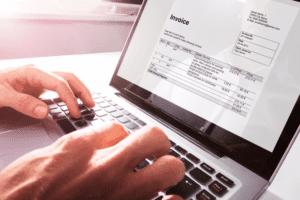All these asset accounts fall into either current or non-current assets. The general ledger is the central hub where all financial transactions are recorded. It contains individual account summaries, showing debit and credit entries to each account. The chart of accounts deals with the five main categories, or, if you will, account types. We’ll start with accounts, as they form the basis for the chart of accounts.
- The general ledger is the central hub where all financial transactions are recorded.
- A well-organized COA, especially one that tracks both current and non-current liabilities, is essential for maintaining healthy cash flow.
- At this point, they demanded a more structured and standardized approach to accounting to help them track their finances, manage inventories, control costs, and assess their financial performance.
- We’ll start with accounts, as they form the basis for the chart of accounts.
- The standard chart of accounts requires you to present your finances divided into several groups – accounts – representing various aspects of your business activities.
Manage your inventory and business easier
Tailoring your chart of accounts to fit your specific business type is important for accurate financial tracking and reporting. Every business has unique financial structures and reporting requirements, so a well-designed chart of accounts helps you manage your finances more effectively and make better decisions. Managing your finances is one of the most important parts of running a successful small business.
At the heart of good financial organization is a clear, well-structured chart of accounts, a tool that helps you track income, expenses, assets, and liabilities in one place. In this chart of accounts for small business template the sub-group column divides each group into the classifications shown in the listings below. The purpose of the sub-group is to classify each account into categories that the business need to produce the balance sheet and income statement for accounting reports.
How Synder Helps Busy Bookkeepers Get Back Valuable Hours and Ensure Accurate Books for Their Clients
For a small business it is important not to over complicate the chart of accounts. A small business does not need many of the accounts required for a large corporation. Many business bank accounts can be opened with no minimum deposit required. It varies depending on the bank account you want to open so be sure to check the requirements of each account before applying. Your EIN is one of a few pieces of information you’ll need to open a bank account.
While the chart of accounts can be similar across businesses in similar industries, you should create a chart of accounts that is unique to your individual business. You should ask yourself, what do I want to track in my business and how do I want to organize this information? For example, we often suggest our clients break down their sales by revenue stream rather than just lumping all sales in a Revenue category.
Chart of accounts for a small business
The document outlines a chart of accounts for a small business, listing account names, codes, financial statements, groups, and sub-groups. It includes over 70 accounts categorized under current assets, long-term assets, current liabilities, long-term liabilities, equity, income, cost of sales, and expenses. Within the five general types of categories of accounts, assets, liabilities, and equity comprise the balance sheet, or statement of financial position. The other two, revenue and expenses, together amount to the income statement, or statement of financial activity. A Chart of Accounts (COA) is a structured and organized listing of all the financial accounts a business uses to record its transactions. Acting as the foundation of a company’s financial system, the COA categorizes every aspect of your finances into key groups such as assets, liabilities, equity, revenue, and expenses.
As your business grows and evolves, some accounts may become outdated or redundant, while new accounts may need to be added to accommodate changes in revenue streams, expenses, or operational priorities. Your COA is not just a tool for categorization; it’s a resource for identifying trends and making informed decisions. Regularly review the data to spot patterns in spending, revenue growth, and profitability, and use these insights to refine your strategies.
- The group refers to the classification of the account into one of the headings shown below.
- The more detailed your small business COA is, the easier it is for the stakeholders to get the information they need to assess the health of your business.
- Computerized accounting systems facilitated the creation and management of extensive charts of accounts.
- For instance, a retail business might categorize revenue into “Online Sales,” “In-Store Sales,” and “Wholesale Revenue,” ensuring clarity across various income streams.
How to Create a Chart of Accounts for Small Businesses
It also doesn’t have a minimum amount required to open the account and doesn’t charge a monthly maintenance fee. They represent what’s left of the business after you subtract all your company’s liabilities from its assets. They basically measure how valuable the company is to its owner or shareholders. Every time you add or remove an account from your business, it’s important to record it in your books and your chart of accounts (COA) helps you do that. Enhanced Efficiency – Having an accurate COA eliminates confusion when recording transactions in general ledger and financial statements, saving your valuable time and resources. Effortless Reporting – COA organizes your financial data, enabling you to generate insightful reports at ease.
In this ultimate guide, not only do we explore examples of a common chart of accounts but also we discuss best practices on how to properly set up your chart of accounts. LendingClub Tailored Checking is a well-rounded business checking account that earns interest on your balance and cash back on debit card purchases. Customers can easily integrate their accounts with Quicken® or Quickbooks® for a more streamlined accounting process. The account also has a built-in invoicing and payment platform called Autobooks, which you can use to create and send invoices and accept payments from customers. The COA helps businesses manage their money wisely, giving them a tool for keeping track of cash flow, creating accurate financial reports, facilitating budgeting, and cost control.
What to Include in the Chart of Accounts for a Small Business
In this guide, we’ll show you how to set up a chart of accounts that’s built for visibility, not just for filing taxes and give you a chart of accounts template that works from day one. Creating a Chart of Accounts for Small Businesses is a foundational step in achieving financial success sample chart of accounts for a small company and stability. This framework not only enhances financial clarity but also streamlines operations by providing a structured approach to tracking and managing your business’s financial transactions. With an organized COA, you can ensure compliance with accounting standards, make informed strategic decisions, and position your business for sustainable growth. Each account listed in the COA corresponds to a specific type of transaction or financial activity, enabling a clear understanding of income, expenses, assets, and liabilities. This system helps businesses stay organized and ensures that financial data is accessible for analysis and reporting.
Below are a few examples, including how you may use sub-accounts to show additional detail.
Below, we’ll discuss why a chart of accounts is so important for your small business; how to make a chart of accounts, and some common account types. As mentioned, all accounts in the COA are typically arranged in a hierarchical order for easy navigation and reporting. It often follows a pattern where the first digit represents the major category, and subsequent digits provide more detail. Equity is the ownership value in a company, determined by subtracting liabilities from assets. In simple terms, it’s what you have in the business as a company owner (or one of the company owners) or, often, an investor. The total assets amount represents the value of all the company’s resources.
Further information on the use of debits and credits can be found in our bookkeeping basics tutorials. Novo doesn’t allow for cash deposits, but you can use the mobile app to deposit money orders and checks. Let’s say that in the middle of the year Doris realizes her orthodontics business is spending a lot more money on plaster, because her new hire keeps getting the water to powder ratio wrong when mixing it. Current liabilities are classified as any outstanding payments that are due within the year, while non-current or long-term liabilities are payments due more than a year from the date of the report. Stay in the know about upcoming events, the latest trends, technology, and accounting insights.
Knowing the basics of the COA, businesses can better understand their finances and make smarter decisions. Other Comprehensive Income includes gains and losses that have not yet been realized but are included in shareholders’ equity. Separating Other Comprehensive Income allows businesses to track changes in the value of certain assets or liabilities over time. Current assets are a company’s possessions it plans to convert into cash or use up within a year, like cash, inventory, and accounts receivable. Non-current assets are things a company owns but won’t convert to cash shortly, like property, equipment, and long-term investments. Meanwhile, let’s look at the general ledger real quick because general ledger uses the accounts listed in the chart of accounts to record and organize financial transactions.
Below, we’ll delve into the different types of accounts and how to number them. Expenses are typically found on the income statement alongside revenue. Expenses are subtracted from revenue to calculate net income – the company’s profit or loss in the period in question. Want to turn your accounting into a powerfull business management tool?
If your chart of accounts is right, you’ll know your true margin and be able to compare your products or services to one another. The chart of accounts often abbreviated to COA, is the foundation of the double entry bookkeeping system. It is basically a listing of all the accounts found in the general ledger that the business will use to code each bookkeeping transaction. This sample chart of accounts provides an example using some of the most commonly found account names. It simplifies the process of generating clear and actionable financial reports, allowing you to assess profitability, monitor cash flow, and identify areas for cost optimization.
For example, purchasing supplies with cash increases your operating expenses and decreases your cash account. As long as your online business bank is FDIC-insured (the standard is up to $250,000 for deposit accounts), online business bank accounts are generally as safe as brick-and-mortar banks. Bluevine is a fintech company with banking services provided by Coastal Community Bank. It offers some features you often don’t get through online banks, such as the ability to deposit cash, order checkbooks and more. Bluevine Business Checking stands out for offering a competitive interest rate for a checking account.





